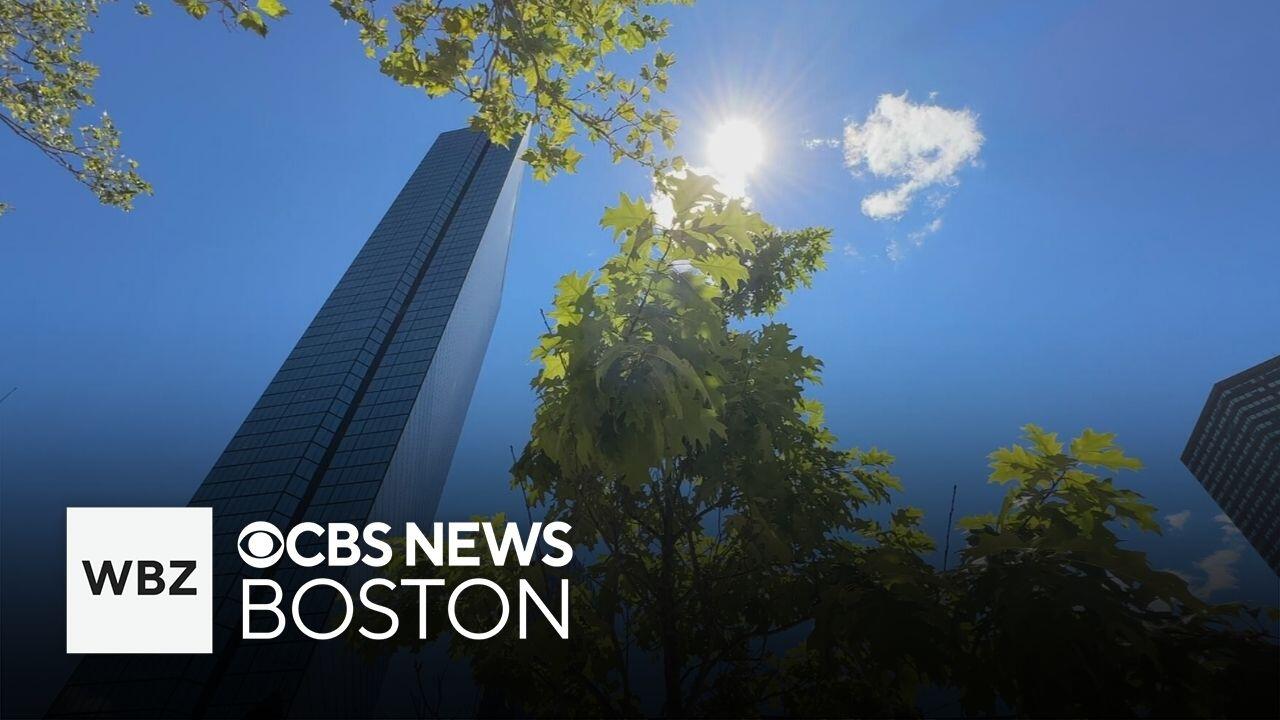Small changes can make a big impact on Boston's "heat islands," expert says

If the weather's felt unbearable lately, you're not imagining it. Boston is entering another stretch of sweltering heat, but for some residents, it's more than just uncomfortable. It's dangerous.
And where you live in the city could be making things significantly worse.
Public health impacts
On one July day in 2019, the official temperature reading at Logan Airport was 92 degrees. But in Ashmont, a neighborhood in Dorchester just a few miles away, the temperature reached 102.6 degrees. That's a staggering 10-degree difference.
"You're talking about a 15-degree disparity between the hottest and coolest parts of the city on the same day," said David Sittenfeld, director of the Center for the Environment at the Museum of Science in Boston. "And that has huge implications for public health, emergency services, and energy use."
Sittenfeld has spent the last two decades studying Boston's "urban heat island effect," a phenomenon where certain neighborhoods become significantly hotter than others due to dense development, asphalt, a lack of green space and historical inequities in city planning.
The built-in heat trap
Urban areas tend to absorb and retain heat, especially places with large amounts of concrete, brick and blacktop. Unlike trees or grass, these surfaces trap solar radiation and release it slowly, turning neighborhoods into long-lasting heat batteries.
This becomes especially dangerous at night when temperatures fail to cool off. The heat puts extra stress on the human body and leaves residents, especially seniors and those with chronic conditions, vulnerable to heat-related illnesses.
Redlined communities hit hardest
The disparities aren't random.
Sittenfeld's team compared areas that were historically redlined - cut off from investment and housing loans - with wealthier, greener neighborhoods. In East Boston, for example, redlined areas had only 3% tree canopy on average. In contrast, more affluent parts of Greater Boston had up to 43% tree canopy.
That lack of shade, combined with dense pavement and limited access to green space or water, gives some neighborhoods what Sittenfeld calls a "head start" toward dangerous outcomes like blackouts, heat stroke and respiratory issues.
When development projects backfire
Adding to the concern is the way some public spaces are being redeveloped. One recent example? Copley Square.
The once-green plaza in the Back Bay was recently resurfaced with stone and concrete. While intended to modernize the space and support events, critics say it's now more of a heat reflector than a community oasis.
"Every time we pave over green space, we're making the heat island worse," said Sittenfeld. "We need to think about the long-term thermal footprint of the spaces we build."
Nature-based solutions that work
But there are bright spots. Just half a mile from one of East Boston's hottest intersections near Maverick Square, researchers recorded temperatures seven degrees cooler at Belle Isle Marsh.
The difference? A salt marsh with just four trees.
"Restoring even small amounts of natural landscape can help. Especially in coastal neighborhoods. Bringing back wetlands, or even just reducing pavement, can be faster and more feasible than planting full tree canopies," said Sittenfeld.
In fact, planners across the region are beginning to think block by block.
"Can we depave a section? Can we plant a few bushes? It doesn't have to be massive to make a difference," he said.
Creative cooling for now
With more extreme heat forecast later this week - and more to come in a warming climate - Boston officials are also turning to short-term solutions.
Some libraries now double as cooling centers, offering shaded outdoor spray tents and reading programs for kids. The city is promoting "social connectedness," too, encouraging residents to check in on elderly neighbors who may not have air conditioning or access to digital heat alerts.
"This is about resilience," said Sittenfeld. "Not everyone experiences heat the same way. But we can take small, smart steps to make it safer for everyone."
What you can do
There are ways you can help in your community.
- Find your nearest cooling center at boston.gov/heat.
- Check in on vulnerable neighbors during hot weather.
- Plant or request more street trees in your area.
- Support community-led greening or depaving projects.
Jacob Wycoff is a meteorologist at WBZ-TV and will contribute to weekend morning newscasts. Jacob is a member of the National Weather Association and the American Meteorological Society.








 English (US) ·
English (US) ·